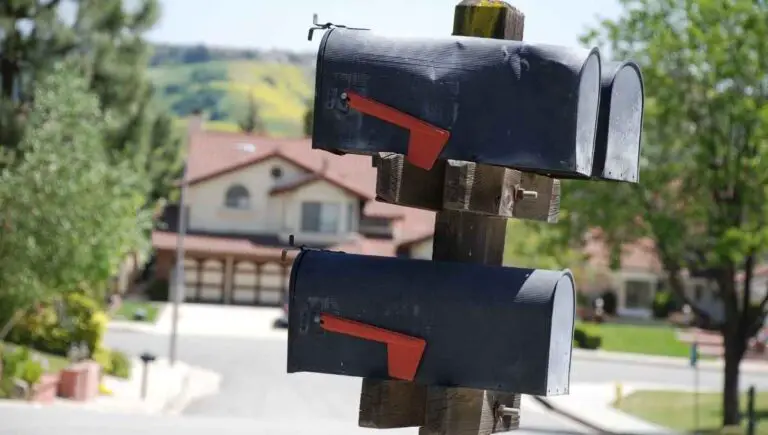How To Remove An Easement From Your Property The Right Way

Easements can easily be considered a burden for most property owners. Allowing others to use a portion of your land for specific purposes can feel like a violation of your privacy. If you’re dealing with the same problem, you might be searching for different ways on how to remove an easement from your property.
Fortunately, there are several ways on how to remove an easement from your property. While many easements are permanent, parties involved can come up with a legal agreement to terminate them. Most of the time, however, this won’t be a simple process and legal action may also be required.
If you want to learn more about the different ways on how to end an easement, we’re going to discuss this in the sections below.
Legal Disclaimer: The information contained in this article is provided for informational purposes only, and should not be interpreted as legal advice or acted upon as such. You should always consult with an attorney or legal professional before taking any action.
Types of Easement – Review
Before learning how to remove an easement from your property, you need to understand the types of easements. Easement termination will also depend on the type of easement the holder has.
- Utility Easement – this is the common type of easement and is usually attached to the property deed. It grants the holder to use the property for a specific purpose. This means that a utility company has all the legal right to come to your property, even without your permission.
- Private Easement – this easement grants an individual or a group of people the right to limited use on someone else’s property.
- Easement By Necessity – This is granted to individuals who need to access other people’s property for a vital purpose, such as reaching their own home.
- Prescriptive Easement – this type of easement is somewhat similar to an easement by necessity. The only difference is that the easement is valid for a specific period of time.
A property owner can grant an individual access to the land but only on a limited basis. However, if that person is denied access, he or she can take the matter to court and file a claim of easement by prescription.
- Public Easement – is meant to benefit the community. This easement grants the public the right to use land, as in the case of a sidewalk.
Are Easements Permanent?
As a property owner who gets burdened by easements, you’ll find yourself asking these questions more frequently: “are easements permanent or can you take them away?”
As mentioned earlier, an easement is mostly permanent unless both parties agree otherwise. However, the property owner and easement holder can also agree that, at some point, the easement has to be terminated.
This can either be at an exact point in time or when specific conditions are met.
Below are just some scenarios on how easements can expire:
- The agreement may have specified that the easement is only valid for a certain time period or is only valid during the lifetime of the easement holder.
- The easement will last only as long as the specified purpose has been served. If the purpose has been stated on the agreement, the easement may be terminated if the purpose can no longer be served. For instance, the use of someone’s property to access a public road will no longer be legally allowed if that public road is closed.
- An easement ceases to exist if the structure or a building that is covered by the easement is destroyed.
- In the case of an easement in gross, the easement ends when its holder dies or if the property has been sold or transferred to a different name.
Can You Take Away An Easement?
This is one common question regarding easements and the answer is yes, you can. The first step to ending an easement is to know the type of easement you want to terminate.
That way, you’ll know whether or not you need to take extra steps just to have the easement removed. This is true for easements that have limited validity. If it expires once the time limit has reached, you don’t need to do anything but only wait it out.
Meanwhile, this section will discuss other ways on how you can end an easement, which are:
- Easement termination by express release
- Merging properties
- Destroying the Reason for Easement
- Abandonment
How Do you End An Easement By Express Release
In this method, an easement can be removed by an agreement. An easement loses its validity if the dominant owner expressed the release of the easement of his own accord. Either that, or you can offer a form of incentive to the dominant owner for the release of the easement.
In other words, it’s like buying out the easement or offering a negotiation for the release. In this case, a lawyer should be present to document the legal release.
One thing to keep in mind is that easements are generally coveted land, which means it is of great value. Expect that a clever dominant owner would not give up an easement so easily or without proper compensation. If you need help to come up with proper negotiation, consult an expert.
Merging Properties
An easement also loses its validity once dominant and servient estates are merged or acquired by the same person. This is because you can’t have an easement on your own property. The easement will no longer exist, regardless of what happens to the land thereafter.
Destroying The Reason For The Easement
Destroying the reason for the existence of the easement would mean that the easement becomes void. For instance, if a wall created between and benefits both properties gets destroyed, the easement will be terminated.
Likewise, if the purpose of a utility easement is to run water lines to a new location, and those lines got destroyed or abandoned for whatever reason and deemed unusable, the purpose of the easement has been destroyed. This also effectively extinguishes the easement.
Abandonment
Termination by abandonment is another way you can put an end to an easement. But what does it mean to abandon an easement? Is it about the owner not using the land covered by the easement for a period of time?
Not using the easement is not enough to prove abandonment. There should be a clear intention to stop using the easement. If the servient land owner blocks an access covered by an easement, and the dominant owner doesn’t mind and continues to do so for a period of time, then the easement is no longer valid.
In this way of easement termination, it should be clear that the easement holder intends on giving up the easement. The easement owner doesn’t have an obligation to always use the land covered by an easement.
Even if he or she wishes so, the easement can sit unused. Whenever he or she decides, he or she can put the easement to good use again. That said, abandonment only happens when the owner clearly stated he/she no longer wants to use it and he/she doesn’t want to use it in the future.
Understanding Easement Termination By Estoppel
Termination by Estoppel works a bit like abandonment. However, instead of extinguishing the easement because of the dominant tenant’s intent to give up, estoppel terminates the easement because the servient owners relied on the dominant owner’s conduct, which indicated his intention to give up the easement.
To use this method of easement termination, the servient owner must prove the following:
- The dominant owner should indicate his intent of no longer using the easement. This could either be doing things that can be considered abandonment or with verbal indication.
- The servient owner relied on the dominant owner’s statement of intent.
- The servient owner’s reliance on the indicated intent would result in his or her suffering if the easement is not extinguished.
How Do I Remove An Easement From My Driveway?
Sharing a driveway with someone isn’t uncommon – but it can be frustrating. Imagine having construction vehicles crossing your property just to get to the other side.
This is what the power of a driveway easement can give to someone. How do you remove such power? What would terminate an easement on my driveway?
Working On An Agreement
A written agreement can solve the headache of having to share a driveway with someone. If both parties agree that the easement is not necessary, then the easement can be extinguished with written agreement.
Another option for this to happen is when the easement holder will transfer the easement to the servient owner. This will void the easement since a property owner cannot have easement on his own land.
Merging
As mentioned, an easement will lose its validity if both dominant and servient estates will be owned by one person.
Quiet Title
A quiet title is more like a “friendly” action that can be taken to court if the plaintiff wants to fight for the true ownership of a property – in this case, the driveway. In this rather complicated process, a new survey should be completed in the area.
This new survey should be able to prove that the previous property lines were inaccurate. If for instance, it was found out that the land covered by the easement actually belongs to the easement holder, then the easement will cease to exist.
Conclusion
Easements may be giving you a headache but it is something that you can terminate. As a homeowner, you should have a basic understanding of the different types of easements, how they are created and the ways that they can be terminated. Working with a lawyer should also ease your concerns regarding easements.







